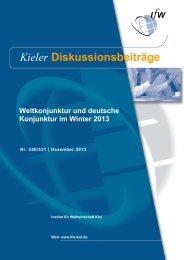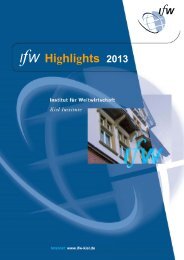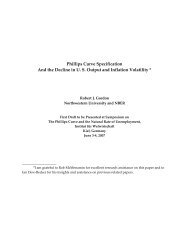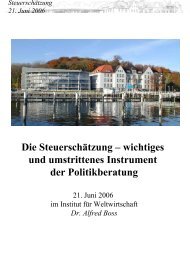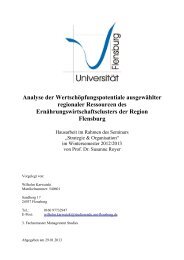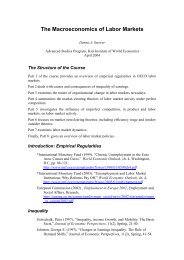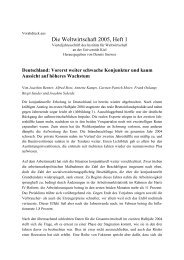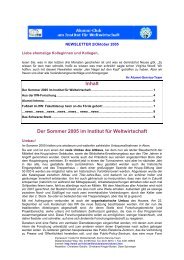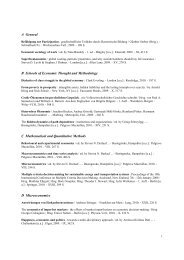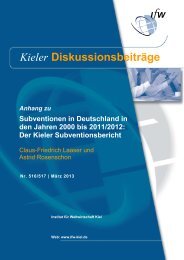Question code
Question code
Question code
You also want an ePaper? Increase the reach of your titles
YUMPU automatically turns print PDFs into web optimized ePapers that Google loves.
Section 1: Basic information, dwelling and location<br />
a) Household coordinates, respondent and interviewer information<br />
<strong>Question</strong><br />
<strong>code</strong><br />
<strong>Question</strong> Response Codes<br />
s1aq1 CBS cluster number See below<br />
s1aq2 Household number<br />
s1aq3 GPS coordinates (Latitude)<br />
s1aq4 GPS coordinates (Longitude)<br />
s1aq5 Name of the respondent<br />
s1aq6<br />
s1aq7<br />
s1aq8<br />
s1aq9<br />
s1aq10<br />
s1aq11<br />
Sex of the respondent<br />
Respondent's position in the household<br />
Interviewer's name<br />
Interview date<br />
Interview start time<br />
Interview end time<br />
1 Female<br />
2 Male<br />
1 Household head<br />
2 Spouse of household head<br />
3 Child<br />
4 Other relation<br />
Codes for s1aq1<br />
Bukhonyi 1186 Lutaso 1178 Mutoto A 1181 Shikondi 1185 Sichilayi 1771<br />
Bukhulunya 1774 Mahiakalo 1773 Muyundi 1180 Shingodo 1187<br />
Ewamakhumbi 1192 Matere 1194 Ngaywa 1183 Shingoto 1191<br />
Industrial 1772 Mavusi A 1179 Savane 1190 Shipalo 1188<br />
Lukala 1776 Musakhwe 1177 Shianda 1182 Shirere 1775<br />
Lukwilo 1170 Mushifumbi 1193 Shikhambi 1769 Shitsiulio 1189<br />
b) Dwelling characteristics<br />
<strong>Question</strong><br />
<strong>code</strong><br />
s1bq1<br />
s1bq2<br />
s1bq3<br />
s1bq4<br />
s1bq5<br />
s1bq6<br />
s1bq7<br />
s1bq8<br />
s1bq9<br />
s1bq10<br />
<strong>Question</strong> Response Codes<br />
What is the chief source of cooking power in this<br />
household?<br />
What is the main source of lighting for the<br />
household?<br />
What is the main source of domestic water for<br />
the household?<br />
Main material of the walls of household head’s<br />
house<br />
Main material of the roof of household head’s<br />
house<br />
Main material of the floor of household head’s<br />
house<br />
Main method of human waste disposal by the<br />
household<br />
Distance to nearest access road (not foot path)<br />
in metres<br />
Type of access road<br />
Distance to nearest market (in km)<br />
1 Firewood<br />
2 Charcoal<br />
3 Kerosine<br />
4 Other<br />
1 Kerosine<br />
2 Electricity<br />
3 Candles<br />
4 Other<br />
1 Pipe in the house<br />
2 Public pipe / Piped water from<br />
somewhere else<br />
3 Stream/River<br />
4 Other<br />
1 Mud<br />
2 Bricks<br />
3 Stone<br />
4 Timber<br />
5 Other<br />
1 Iron sheets<br />
2 Tiles<br />
3 Thatch<br />
4 Other<br />
1 Cement<br />
2 Mud<br />
3 Other<br />
1 Pit latrine<br />
2 Toilet<br />
3 Other<br />
1 Tarmac<br />
2 Murram<br />
3 Earth<br />
1
Section 2: Basic individual characteristics (all individuals, including ALL children, househelp – start with household head)<br />
ID<br />
1<br />
2<br />
3<br />
4<br />
5<br />
6<br />
7<br />
8<br />
9<br />
10<br />
11<br />
12<br />
13<br />
14<br />
15<br />
16<br />
17<br />
18<br />
19<br />
s2q1 s2q2 s2q3 s2q4 s2q5 s2q6 s2q7 s2q8 s2q9<br />
Relationship to<br />
Years of<br />
Age Sex Marital status Religion Literacy status Education (highest level)<br />
Occupational status<br />
household head<br />
education<br />
1 Household head<br />
0 if younger<br />
than 1<br />
1 female 1 Single 1 Protestant 1<br />
Neither read nor<br />
write<br />
1 No formal schooling 1<br />
Too young (up to 12)/<br />
too old to work<br />
2<br />
Spouse of<br />
household head<br />
2 male 2 Married (mono.) 2 Roman Catholic 2 Read only 2 Primary incomplete 2 Student<br />
3 Child 3 Married (poly.) 3 7th day adventist 3 Write only 3 Primary complete 3 Unemployed<br />
4 Grandparent 4 Widowed (mono.) 4 Muslim 4 Read and write 4 Secondary incomplete<br />
5 Other relatives 5 Widowed (poly.) 5 Other 5 Secondary complete<br />
4 Occupied<br />
6 Worker/Househelp 6 Separated/divorced 6 Vocational training<br />
7 Other 7 Cohabiting 7 Tertiary college (no university)<br />
5 Housework<br />
8 University<br />
9 University +<br />
If 4: Fill section 3<br />
for this member<br />
now<br />
s2q10<br />
Household size (should be consistent with the above table, repeat this number to the respondent in order to make sure you did<br />
not forget anybody)<br />
2
Section 3: Job characteristics (DON’T FORGET TO PUT THE NUMBER OF THE INDIVIDUAL FROM SECTION 2 FIRST)<br />
s3q1 s3q2 s3q3 s3q4 s3q5 s3q6 s3q7 s3q8<br />
How many<br />
How many<br />
Sector/Main<br />
How much do you earn in this<br />
How much do you earn in this<br />
days per<br />
Secondary Sector/Main days per week<br />
ID s2 Main occupation crop on<br />
occupation (in KSh) (ONLY IF<br />
occupation (in KSh) (ONLY IF<br />
week in this<br />
occupation crop on farm in this<br />
farm<br />
EMPLOYEE/WORKER)?<br />
EMPLOYEE/WORKER)?<br />
occupation?<br />
occupation?<br />
See <strong>code</strong>s<br />
Only one entry per individual!<br />
1 Farmer<br />
below<br />
1 Farmer<br />
2 Employee/Worker 2 Employee/Worker<br />
Non-agricultural<br />
Non-agricultural<br />
3 self-employment /<br />
self-employment /<br />
employer 3 employer<br />
4<br />
Non-paid<br />
household<br />
member<br />
4<br />
Non-remunerated<br />
household<br />
member<br />
See <strong>code</strong>s<br />
below<br />
Only one entry per individual!<br />
Daily Weekly Monthly Daily Weekly Monthly<br />
Codes for s3q2 and s3q6<br />
1 Food crops 9 Food production (including bakeries, butchers, etc.) 17 Transport (other) 25 Formal services (banking, insurance, real estate)<br />
2 Tea 10 Furniture, wood-related carpentry, timber materials 18 Repair of motor vehicles 26 Church, NGOs, international organizations etc.<br />
3 Sugar cane 11 Metal works 19 Other repair shops (bicycles etc) 27 Hotels and restaurants<br />
4 Vegetables 12 Charcoal production 20 Retail - street vendor 28 Government and government agencies, public service<br />
5 Other crops (trees etc.) 13 Other manufacturing (clothing, textiles etc.) 21 Retail - fixed stall, shop 29 Househelp<br />
6 Livestock 14 Construction 22 Wholesale 30 Other informal services (Shoe shining, washing etc.)<br />
7 Fishing and hunting 15 Transport (own motor vehicle) 23 Medical service, hospital, pharmacies 31 Other formal services (Security etc.)<br />
8 Mining and quarrying 16 Transport (boda-boda) 24 Hair dressing and beauty 32 Other (Specify)<br />
3
Section 4: Non-agricultural enterprise, i.e. self-employment (possibly with households members helping) or employer (if there is no non-agricultural<br />
enterprise go to section 5)<br />
s4q1 s4q2 s4q3 s4q4 s4q5 s4q6 s4q7<br />
No.<br />
Sector of the<br />
enterprise<br />
When was<br />
this<br />
enterprise<br />
started?<br />
How many<br />
household<br />
members<br />
participate in this<br />
enterprise?<br />
How many hired<br />
workers work in<br />
this enterprise?<br />
What is the amount of sales of<br />
your enterprise?<br />
How much do you earn from this<br />
enterprise once you deduct all<br />
expenses e.g. for hired labour, for<br />
machines and raw materials?<br />
The earning from this<br />
enterprise have increased/<br />
decreased/stayed constant<br />
during the last three<br />
years?<br />
See <strong>code</strong>s below Year Only one entry per row! Only one entry per row! 1 Increased<br />
2 Decreased<br />
3 Stayed constant<br />
Daily Weekly Monthly Daily Weekly Monthly<br />
1<br />
2<br />
3<br />
4<br />
5<br />
6<br />
7<br />
8<br />
Codes for s4q1<br />
9 Food production (including bakeries, butchers, etc.) 17 Transport (other) 25 Formal services (banking, insurance, real estate)<br />
10 Furniture, wood-related carpentry, timber materials 18 Repair of motor vehicles 26 Church, NGOs, international organizations etc.<br />
11 Metal works 19 Other repair shops (bicycles etc) 27 Hotels and restaurants<br />
12 Charcoal production 20 Retail - street vendor 28 Government and government agencies, public service<br />
13 Other manufacturing (clothing, textiles etc.) 21 Retail - fixed stall, shop 29 Househelp<br />
14 Construction 22 Wholesale 30 Other informal services (Shoe shining, washing etc.)<br />
15 Transport (own motor vehicle) 23 Medical service, hospital, pharmacies 31 Other formal services (Security etc.)<br />
8 Mining and quarrying 16 Transport (boda-boda) 24 Hair dressing and beauty 32 Other (Specify)<br />
4
Section 5: Land ownership and use (Go to section 8 if household does not have land)<br />
<strong>Question</strong><br />
<strong>code</strong><br />
s5q1<br />
s5q2<br />
s5q3<br />
s5q4<br />
s5q5<br />
s5q6<br />
s5q7<br />
s5q8<br />
s5q9<br />
s5q10<br />
s5q11<br />
s5q12<br />
s5q13<br />
s5q14<br />
s5q15<br />
s5q16<br />
s5q17<br />
<strong>Question</strong> Response Codes<br />
Do you own your farm or is it rented?<br />
Which type of land rights do you hold?<br />
Total land size of your farm (in acres)<br />
Do you have separate parcels of land, if yes, how many?<br />
How far from here is the largest of these parcels? (in km)<br />
When did you start farming independently? (year)<br />
When you started farming how did you acquire your land?<br />
What was the size of your parents’ farm? (in acres)<br />
Since you started your farm, how has the size of the farm<br />
changed?<br />
How have these changes occurred?<br />
Total size of land under cultivation during the long rains 2005 (in<br />
acres)<br />
Total size of land under cultivation during the short rains 2005 (in<br />
acres)<br />
Do you leave some plots on your land fallow?<br />
What is the size of the fallow plot in acres?<br />
When was this fallow plot last under fallow?<br />
What was the duration of this former fallow? (in months)<br />
In the past 10 years, have you changed fallow duration?<br />
1 Owned<br />
2 Rented (Go to s4q3)<br />
1 Title deed<br />
2 Customary rights<br />
3 Other<br />
1 No (Go to s4q6)<br />
2 One<br />
3 Two<br />
4 Three or more<br />
1 Inherited<br />
2 Bought<br />
3 Rented<br />
4 Government allocation<br />
5 Other<br />
1 Increased<br />
2 Decreased<br />
Stayed constant (Go to<br />
3<br />
S4q11)<br />
1 Sold out land<br />
2 Bought land<br />
3 Rented land<br />
4 Divided land<br />
5 Inherited land<br />
Loss of land due to<br />
6<br />
erosion<br />
7 Other<br />
1 Yes<br />
2 No (Go to s4q17)<br />
1 More than 10 years ago<br />
2 5-10 years ago<br />
3 Less than 5 years ago<br />
I do not remember(Go to<br />
4<br />
s4q17)<br />
1 Increased<br />
2 Decreased<br />
3 Stayed constant<br />
5
Section 6: Agricultural production except livestock (go to section 8 if no agricultural activities)<br />
a) Maize, beans, other staple food crops (4 main crops)<br />
s6aq1 s6aq2 s6aq3 s6aq4 s6aq5 s6aq6 s6aq7 s6aq8<br />
Price per unit of Today you plant Today are yields of this<br />
Quantity harvested Quantity sold of last<br />
Area in<br />
quantity in KSh at time more/less/the same of crop higher or lower Which seeds do<br />
Crop <strong>code</strong><br />
(last harvest after long harvest after long<br />
acres<br />
of sale (not current this crop compared to compared to three years you use?<br />
rains)<br />
rains<br />
price!)<br />
three years ago? ago?<br />
See below<br />
Quantity <strong>code</strong>s see below<br />
Unit of<br />
quantity<br />
Quantity<br />
Unit of<br />
quantity<br />
Quantity <strong>code</strong>s see<br />
below<br />
Quantity<br />
Unit of<br />
quantity<br />
Quantity <strong>code</strong>s see<br />
below 1 More 1 Higher 1 Local<br />
Price<br />
2 Less 2 Lower 2 Improved<br />
3 The same 3 The same 3 Mixed<br />
4 Other<br />
Codes for s6aq1<br />
Unit of quantity <strong>code</strong>s<br />
1 Maize 9 Groundnuts 1 Piece/Number<br />
2 Beans 10 Irish potatoes 2 Kg<br />
3 Sweet potatoes 11 Soy beans 3 90 kg bag<br />
4 Cooking Banana 4 Gorogoro<br />
5 Cassava 5 Bunch<br />
6 Sorghum<br />
7 Arrow roots<br />
8 Millet<br />
b) Tea (if no tea go to section s6c)<br />
s6bq1 s6bq2 s6bq3 s6bq4<br />
Crop Area in acres Monthly harvest<br />
Today you plant more/less/the<br />
same of this crop compared to<br />
three years ago?<br />
Quantity <strong>code</strong>s see above 1 More<br />
Tea<br />
Unit of<br />
quantity<br />
Quantity<br />
2 Less<br />
3 The same<br />
6
c) Sugar cane (if no sugar cane go to s6d)<br />
s6cq1 s6cq2 s6cq3 s6cq5 s6cq6 s6cq7<br />
How long had the sugar<br />
Today you plant<br />
Price per unit of quantity<br />
cane been on the field Quantity harvested<br />
more/less/the same of<br />
Crop Area in acres Date of last harvest<br />
in KSh at time of sale<br />
before it was harvested ( (last harvest)<br />
this crop compared to<br />
(not current price!)<br />
in months)?<br />
three years ago?<br />
Sugar cane<br />
month<br />
year<br />
1 Tons 1 Tons 1 More<br />
2 Big tractor 2 Big tractor 2 Less<br />
3 Small tractor 3 Small tractor 3 Same<br />
Unit of<br />
Unit of<br />
quantity Quantity quantity Price<br />
d) Other crops and vegetables, max. 3, ranked by importance (if no other crops etc. go to section s6e)<br />
s6dq1 s6dq2 s6dq3 s6dq4 s6dq5 S5dq6 s6dq7<br />
Code<br />
Area in acres<br />
How many<br />
harvests per<br />
year?<br />
Quantity harvested (last<br />
harvest)<br />
Quantity sold of last harvest<br />
Price per unit of quantity<br />
in KSh at time of sale<br />
(not current price!)<br />
See below Quantity <strong>code</strong>s see below Quantity <strong>code</strong>s see below Quantity <strong>code</strong>s see above 1 More<br />
2 Less<br />
3 Same<br />
Unit of<br />
quantity<br />
Quantity<br />
Unit of<br />
quantity<br />
Quantity<br />
Unit of<br />
quantity<br />
Price<br />
Today you plant more/<br />
less/the same of this<br />
crop compared to<br />
three years ago?<br />
Codes for s6dq1<br />
1 Napier 7 Mrere/mrenda/Corchorus Olitoris/Lihoo 13 Terere 19 Egg Plant/Aubergine<br />
2 Local sugarcane 8 Tsisagaa/Spider Weed/Gynandropsis Gynandra 14 Nderema/Basela Alba<br />
3 Kunde 9 Malenge/Tseveve/Pumpkin Leaves/Sebebe 15 Onions<br />
4 Sukuma 10 Dodo/Toto/Amaranthus Hybridus/Mchicha/Terere/Libokoi 16 Chili/Pili-Pili<br />
5 Cabbage 11 Lisutsa/Sucha 17 Kanzera<br />
6 Miro/mito/Crotolaria 12 Tomato 18 Black night shade/ Isutsa<br />
Unit of quantity <strong>code</strong>s<br />
1 Piece/Number<br />
2 Kg<br />
3 90 kg bag<br />
4 Gorogoro<br />
5 Bunch<br />
7
e) Fruit crops, max. 3, ranked by importance (if no fruit crops etc. go to section 7)<br />
s6eq1 s6eq2 s6eq3 s6eq4 s6eq5 S6eq6 s6eq7<br />
Code<br />
How many<br />
trees<br />
How many<br />
harvests per<br />
year?<br />
Quantity harvested (last<br />
harvest)<br />
Quantity sold of last harvest<br />
Price per unit of quantity<br />
in KSh at time of sale<br />
(not current price!)<br />
Today you had<br />
more/less/the<br />
same of this tree<br />
compared to three<br />
years ago?<br />
See below Quantity <strong>code</strong>s see below Quantity <strong>code</strong>s see below Quantity <strong>code</strong>s see above 1 More<br />
2 Less<br />
3 Same<br />
Unit of<br />
quantity<br />
Quantity<br />
Unit of<br />
quantity<br />
Quantity<br />
Unit of<br />
quantity<br />
Price<br />
Codes for s6eq1<br />
1 Ripening bananas 7 Loquarts<br />
2 Sweet bananas 8 Musioma/Zambarau<br />
3 Avocado 9 Passion Fruit<br />
4 Mango 10 White support<br />
5 Guava 11 Mukhombero<br />
6 Paw Paw 12 Mufudu<br />
Codes for units of quantity<br />
1 Piece/Number<br />
2 Kg<br />
3 90 kg bag<br />
4 Gorogoro<br />
5 Bunch<br />
8
Section 7: Input use, extension, fencing and pollination<br />
a) Non-labor input use<br />
s7aq1<br />
s7aq2<br />
Non-labor inputs:<br />
Today you use more/less/the same of this input compared to<br />
Do you use the following inputs? three years ago<br />
Improved seed<br />
Manure<br />
Inorganic fertilizer<br />
Pesticides and/or herbicides<br />
1 Yes 1 More<br />
2 Less<br />
2 No<br />
3 The same<br />
b) Labor input, extension, and technology<br />
<strong>Question</strong><br />
<strong>code</strong><br />
<strong>Question</strong> Response Codes<br />
s7bq1<br />
How many household members (without payment) work on<br />
the farm?<br />
s7bq2<br />
How many hired workers work permanently on your farm who<br />
are not members of the household?<br />
s7bq3<br />
In very busy times (harvesting or weeding), how many hired<br />
workers work on your farm (including permanent workers)?<br />
s7bq4<br />
s7bq5<br />
s7bq6<br />
s7bq7<br />
s7bq8<br />
Today you hire more/less/same number of workers<br />
compared to three years ago?<br />
What is the main source of agricultural information?<br />
How often are you visited by an agricultural extension<br />
officer?<br />
Have you hired a tractor in the past 12 months?<br />
Have you hired oxen power in the past 12 months?<br />
1 More<br />
2 Less<br />
3 Same<br />
1 Agricultural extension<br />
Community based<br />
2 organizations<br />
3 NGOs<br />
4 Church<br />
Farmer groups/farmer<br />
associations<br />
5<br />
6 Other<br />
7 None<br />
0 Not at all<br />
1 1 or 2 times in the past 5 years<br />
2 Once every year<br />
3 Once every month<br />
4 Weekly<br />
1 Yes<br />
2 No<br />
1 Yes<br />
2 No<br />
c) Fencing and pollination<br />
<strong>Question</strong><br />
<strong>Question</strong> Response Codes<br />
<strong>code</strong><br />
s7cq1<br />
s7cq2<br />
s7cq3<br />
s7cq4<br />
s7cq5<br />
s7cq6<br />
s7cq7<br />
s7cq8<br />
s7cq9<br />
s7cq10<br />
Do you have a live fence on your farm?<br />
Do the species of your live fence flower?<br />
Would you plant fencing species like fruit trees or species that can<br />
be used as fodder as part of a live fence?<br />
Do you know honeybees?<br />
Do you keep honeybees?<br />
Do you know bees other than honeybees?<br />
Do you see bees on your crop flowers?<br />
Do flowers benefit from bee visits?<br />
Do you think that without flowers you can get fruits or seeds?<br />
Do you know what is required for a flower to become fruit or seed?<br />
1 Yes<br />
2 No<br />
1 Yes<br />
2 No<br />
3 Some<br />
1 Yes<br />
2 No<br />
1 Yes<br />
2 No<br />
1 Yes<br />
2 No<br />
1 Yes<br />
2 No<br />
1 Yes<br />
2 No<br />
1 Yes<br />
2 No<br />
3 I do not know<br />
1 Yes<br />
2 No<br />
1 Yes<br />
2 No<br />
3 I do not know<br />
9
Section 8: Household expenditure<br />
a) Items with high share of home or free consumption<br />
s8aq1 s8aq2 s8aq3 s8aq4<br />
Home produced (last<br />
month)<br />
Purchased (last month) Free – Presents, gifts (last<br />
month)<br />
Quantity <strong>code</strong>s below Quantity <strong>code</strong>s below Quantity <strong>code</strong>s below<br />
Unit of<br />
quantity<br />
Quantity<br />
Unit of<br />
Quantity<br />
Quantity<br />
Unit of<br />
Quantity<br />
Quantity<br />
1 Maize<br />
2 Beans<br />
3 Cooking Bananas<br />
4 Sweet potatoes<br />
5 Cassava<br />
6 Arrow roots<br />
7 Fire Wood<br />
Codes for units of quantity<br />
1 Piece/Number<br />
2 Kg<br />
3 90 kg bag<br />
4 Gorogoro<br />
5 Bunch<br />
Price per<br />
Unit of<br />
Quantity<br />
b) Other food items<br />
s8bq1 s8bq2 s8bq3<br />
Value of home<br />
production (last<br />
month)<br />
8 Other staple foods or derived products (rice,<br />
sorghum, millet, all types of flour)<br />
9 Vegetables e.g. tomatoes, traditional,<br />
cabbages etc.<br />
10 Fruits e.g. sweet bananas, paw-paw, mango,<br />
etc<br />
11 Eggs<br />
12 Dairy products e.g. milk, yoghurt<br />
13 Oil and fats<br />
14 Meat e.g. beef, fish, pork etc.<br />
15 Tobacco products e.g. cigarettes etc<br />
16 Alcoholic drinks e.g. traditional brew etc.<br />
17 Tinned food e.g. fish, baby food<br />
18 Spices e.g. salt, chilly, baking powder etc.<br />
19 Beverages e.g. soda, coffee, tea, soy,<br />
chocolate etc.<br />
20 Sugar e.g. nguru, etc<br />
21 Jam, honey, sweets etc.<br />
22 Expenditure in food kiosks /restaurants<br />
Value of<br />
purchases<br />
(last month)<br />
Price per<br />
Unit of<br />
Quantity<br />
10
c) Regular non-food items<br />
s8cq1 s8cq2 s8cq3<br />
Value of home<br />
production (last<br />
month)<br />
23<br />
Clothing including blankets, pillows,<br />
mosquito nets, etc (all)<br />
24 Footwear (all)<br />
25 Household utensils<br />
26 Furniture<br />
27 Personal goods e.g. jewellery; wallets, etc.<br />
28<br />
Household operation e.g. soap, match box,<br />
detergents, candles etc.<br />
29<br />
Personal care e.g. salon, sanitary pads, hair<br />
oil<br />
30 Charcoal<br />
31 Kerosene /paraffin<br />
32 Electricity<br />
33 Communication costs e.g. phone/stamps<br />
34<br />
Individual transport costs e.g. boda-boda,<br />
buses, taxis etc<br />
35 Farm products transport costs<br />
36 Electricity, water etc. (bills).<br />
37 Rent of rented house<br />
38 Rent of rented farm<br />
39<br />
Recreation and entertainment e.g. news<br />
paper, video show , magazines<br />
40 Domestic worker /s<br />
41 Maintenance of housing unit e.g. repairs<br />
42 School fees and items<br />
43 Taxes<br />
44 Market fees<br />
45 Contributions to the church / mosques<br />
46 Contributions to other organizations<br />
47 Interest paid on loans<br />
48 Savings<br />
Value of<br />
purchases<br />
(last month)<br />
11
Section 9: Other income sources (and migration)<br />
<strong>Question</strong><br />
<strong>code</strong><br />
<strong>Question</strong> Response Codes<br />
s9q1 Renting out land or property per month (in KSh)<br />
s9q2 Pension payments per month (in KSh)<br />
s9q3<br />
Other income (interest earnings, dividends etc. per<br />
month , other public transfers e.g. unemployment<br />
benefits) per month (in KSh)<br />
s9q4<br />
How many former household members have<br />
migrated during the last 10 years?<br />
s9q5<br />
What is the amount the household receives from<br />
family members living outside this household (in<br />
KSh)?<br />
Per week<br />
Per month<br />
Per year<br />
s9q6<br />
Today you rely more or less on remittances than<br />
three years ago?<br />
1 More<br />
2 Less<br />
3 Same<br />
Only one entry!<br />
Section 10: Assets and livestock<br />
s10q1 s10q2 s10q3 s10q4<br />
Type of asset Quantity Value as of<br />
today (per<br />
unit)<br />
Today you own<br />
more/less/same of this asset<br />
compared to three years ago?<br />
1 More<br />
2 Less<br />
1 Cows<br />
2 Pigs<br />
3 Chicken (or other poultry)<br />
4 Goats or sheep<br />
5 Radio<br />
6 Television<br />
7 Bicycle<br />
8 Mobile phone<br />
9 Fixed telephone<br />
10 Rental houses Put total value!<br />
11 Sewing machine<br />
12 Kerosene stove<br />
13 Plates, sufurias, i.e. Put total value!<br />
crockery<br />
14 Energy saving jiko Put total value!<br />
15 Sofa set<br />
3 Same<br />
12
Section 11: The role of the forest<br />
<strong>Question</strong><br />
<strong>Question</strong> Response Codes<br />
<strong>code</strong><br />
s11q1<br />
s11q2<br />
s11q3<br />
s11q4<br />
Do you think the Kakamega forest is important?<br />
How often do household members go into the<br />
forest?<br />
Why, major reason?<br />
Why, other reason?<br />
1 Yes<br />
2 No<br />
1 Never (Go to section 12)<br />
2 Once a year<br />
3 Once every month<br />
4 Once a week<br />
5 Several times a week<br />
1 Collect firewood<br />
2 Touring or Leisure<br />
3 Collect medicinal herbs<br />
4 Cattle grazing<br />
5 Land cultivation<br />
6 Employment<br />
7 Water collection<br />
8 Wild honey<br />
9 Charcoal burning<br />
10 Timber, plywood, seedlings<br />
11 Education<br />
12 Other<br />
1 Collect firewood<br />
2 Touring or Leisure<br />
3 Collect medicinal herbs<br />
4 Cattle grazing<br />
5 Land cultivation<br />
6 Employment<br />
7 Water collection<br />
8 Wild honey<br />
9 Charcoal burning<br />
10 Timber, plywood, seedlings<br />
11 Education<br />
12 Other<br />
Section 12: Institutional Embedding<br />
<strong>Question</strong><br />
<strong>code</strong> <strong>Question</strong> Response Codes<br />
s12q1<br />
s12q2<br />
s12q3<br />
s12q4<br />
s12q5<br />
s12q6<br />
Is anybody of this household member of a credit<br />
scheme or group?<br />
Does the household have an outstanding loan or<br />
have you borrowed money during the last 12<br />
months?<br />
This loan is given by<br />
Is anybody of this household member of a farmers’<br />
organisation?<br />
Is anybody of this household member of a trade<br />
union?<br />
Is anybody of this household member of a self-help<br />
group?<br />
1 Yes<br />
2 No<br />
1 Yes<br />
2 No (Go to s12q4)<br />
1 Neighbours or friends<br />
2 Savings group<br />
3 Other microfinance institutions<br />
4 Cooperatives<br />
5 Banks<br />
6 Other<br />
1 Yes<br />
2 No<br />
1 Yes<br />
2 No<br />
1 Yes<br />
2 No<br />
13
Section 13: Shocks experienced by the household<br />
S13q1 S13q2 S13q3<br />
Shocks:<br />
Has the household been negatively affected by the<br />
following events in the past 5 years?<br />
Rank the 3 most<br />
important shocks<br />
When did this shock<br />
occur (Year)?<br />
1 Yes 1 Most severe<br />
2 No 2 Second most severe<br />
3 Third most severe<br />
Only for the three most<br />
important shocks!<br />
1 Drought or flood<br />
2 Crop disease or pests<br />
3 Livestock died or stolen<br />
4 Business failure or loss of job<br />
End of regular assistance (aid,<br />
5 remittances) from outside the<br />
household<br />
6 Large fall in prices for crops<br />
7 Large rise in food prices<br />
8 Large rise in agricultural input prices<br />
Chronic or severe illness of working<br />
9<br />
household member<br />
Chronic or severe illness of<br />
10 household member (who does not<br />
work, too old or too young)<br />
11 Death of working household member<br />
12 Birth in the household<br />
Household member victim of crime<br />
13<br />
(robbery, carjacking, assault)<br />
14 Other (specify) 14
Annex A: Agro-biodiversity information on farms<br />
Aq1 Aq2 Aq3 Aq4<br />
Crop Species Variety Area covered Total farm area<br />
1<br />
2<br />
3<br />
4<br />
5<br />
6<br />
7<br />
8<br />
9<br />
10<br />
11<br />
12<br />
13<br />
14<br />
15<br />
Annex B: Changes in fencing species (if there is a live fence)<br />
<strong>Question</strong><br />
<strong>code</strong><br />
Bq1<br />
<strong>Question</strong> Response Codes<br />
Have your fencing species changed in the<br />
last 5 years?<br />
1 Yes<br />
2 No<br />
Bq2<br />
Why did you change your fencing species?<br />
(Specify)<br />
15
Annex C: Migration and remittances (rural – rural migration ONLY out of district)<br />
a) Individual information of the migrants<br />
Caq1 Caq Caq3 Caq4 Caq5 Caq6 Caq7 Caq8 Caq9<br />
2<br />
ID emigrated<br />
HH-hold<br />
members<br />
Sex Age Relationship to<br />
HH-Head<br />
Marital Status Education level Kind of<br />
migration<br />
NAME!<br />
1<br />
2<br />
3<br />
4<br />
5<br />
1 Fem.<br />
2 male<br />
1 Household head 1 Married 1 No formal schooling<br />
2 Spouse to hhh 2 Divorced 2 Primary incomplete<br />
3 Child 3 Separated 3 Primary complete<br />
4 Grandparent 4 Widowed 4 Secondary incomplete<br />
5 Other relative<br />
5 Secondary complete<br />
6 Other<br />
6 Vocational training<br />
5 Single<br />
7 Tertiary college<br />
8 University +<br />
1 Periodic/<br />
Seasonal<br />
2 Irregular<br />
3 Long-term<br />
If 3 go to<br />
C8q8<br />
Last time the<br />
migrant was<br />
away, how long<br />
did he stay?<br />
Months<br />
Weeks<br />
Year and month of<br />
migration (first time<br />
of migration if<br />
periodic/irregular)<br />
Regularity of<br />
coming home<br />
1 Weekly<br />
2 Once a month<br />
3 Several times a year<br />
4 Once a year<br />
5 Less than once a<br />
year<br />
16
ID<br />
1<br />
2<br />
3<br />
4<br />
5<br />
Caq10 Caq11 Caq12 Caq13 Caq14<br />
Current place of residence Reason for migration (Codes below!) Activity of migrant Kind of employment How many times has the<br />
(Codes below!)<br />
migrant changed job?<br />
1 Formal 1 Never<br />
Main<br />
Second<br />
2 Informal 2 Once<br />
3 Few times<br />
4 Several times<br />
Codes for Caq10<br />
Codes for Caq11<br />
1 Kakamega town 6 Nairobi 11 Rift Valley other urban 16 Central rural 1 Education 6 Looking for land to farm<br />
2 Kisumu 7 Thika 12 Rift valley rural 17 Coast other urban 2 Marriage 7 Provided land by government<br />
3 Mumias 8 Mombasa 13 Nyanza other urban 18 Coast rural 3 Friends or relatives 8 Inherited land<br />
4 Nakuru 9 Western other urban 14 Nyanza rural 19 (North-)Eastern urban 4 Employment or search for job 9 Way of life in town/city<br />
5 Eldoret 10 Western rural 15 Central other urban 20 (North-)Eastern rural 5 Job offer and reallocation 10 Other (Specify)<br />
Codes for Caq12<br />
1 Food crops 7 Fishing and hunting 13 Construction 19 Retail - street vendor 25 Public service<br />
2 Tea 8 Mining and quarrying 14 Transport (own motor vehicle) 20 Retail - fixed stall, shop 26 Hospitals pharmacies<br />
3 Sugar cane 9 Food production (incl. bakeries, butchers, etc.) 15 Transport (boda-boda) 21 Wholesale 27 Student<br />
4 Vegetables 10 Furniture, timber materials/carpentry 16 Transport (other) 22 Hair dressing and beauty 28 Unemployed<br />
5 Other crops (trees etc.) 11 Metal works 17 Repair of motor vehicles 23 Formal services (banking, insurance, real estate) 29 Housework<br />
6 Livestock 12 Other manufacturing (clothing, textiles etc.) 18 Other repair shops (bicycles etc) 24 Church, NGOs, international organizations etc. 30 Other (Specify)<br />
ID<br />
member<br />
1<br />
2<br />
3<br />
4<br />
5<br />
Caq15 Caq16 Caq17 Caq18 Caq19 Caq20<br />
Types of remittances Regularity of receiving Approx. amount Types of remittances Regularity<br />
Approx. amount each<br />
being sent to household remittances<br />
each time (in Ksh) send to migrants<br />
time (in Ksh)<br />
1 Cash 1 Once a week<br />
2 Foodstuff 2 Once a month<br />
3 Agricultural inputs 3 Several times per year<br />
4 Education fees<br />
4 Once a year<br />
5 Other<br />
Main type Second type 5 Once in a while<br />
Including the value of<br />
non-cash items!<br />
1 Cash 1 Once a week<br />
2 Foodstuff 2 Once a month<br />
3 Agricultural inputs 3 Several times per year<br />
4 Education fees<br />
4 Once a year<br />
5 Transport costs<br />
6 Other<br />
Main type Second type 5 Once in a while<br />
Including the value of non-cash<br />
items!<br />
17
) Channels of remittances<br />
<strong>Question</strong> Response Codes<br />
Cbq1 How does the household receive or send money<br />
1 By the migrant 5 Bank transfer<br />
from or to the migrated person (most<br />
2 By a relative 6 Post office<br />
3 By a friend 7 Bus companies,<br />
important)?<br />
matatus, taxis<br />
Cbq2<br />
How reliable is his mode of receiving money by<br />
this person or service?<br />
4 By a workmate of migrant 8 Other<br />
1 Reliable<br />
2 Moderately reliable<br />
3 unreliable<br />
Cbq3 Do migrated members sell products from the<br />
household on markets of their new residence?<br />
Cbq4 If yes, how often? 1 Weekly<br />
2 Monthly<br />
3 Several times a year<br />
4 Once a year<br />
Cbq5<br />
Item<br />
If yes, please name the two most important<br />
products and the approximate sales value each<br />
time. (Codes below!)<br />
1<br />
2<br />
1 Yes<br />
2 No (Go to section c!)<br />
Approximate sales value (in Ksh)<br />
Codes Cbq6<br />
1 Staple food (Maize, beans, potatoes, cassava etc.) 4 Livestock and livestock products (including meat, eggs and milk)<br />
2 Vegetables/Fruits 5 Non-agricultural products<br />
3 Tea/Sugar<br />
c) Use of remittances (Give savings as an example!)<br />
Ccq1 Ccq2 Ccq3<br />
Remittances are mainly used for expenses in<br />
Rank the three most<br />
important uses<br />
1 Daily needs/ daily expenses<br />
2 Foodstuff<br />
3 Health care<br />
4 Education (school fees etc.)<br />
5 Consumer durables (television, radios, etc.)<br />
6 Personal items (cigarettes, cosmetics, beer etc.)<br />
7 Building material<br />
8 Rent<br />
9 Purchases of Land<br />
10 Purchases of livestock<br />
11 Loan repayments<br />
12 Savings<br />
13 Investment in new income generating activities<br />
14 Agricultural input (seeds, fertilizer, etc.)<br />
For these three uses approximate<br />
the value in Ksh per month<br />
d) Determining factors and consequences of migration<br />
<strong>Question</strong> Response Code<br />
Cdq1 How has the migration of household members<br />
1 Increased income<br />
affected the household (main effect)?<br />
2 Forced to spend money in migration<br />
3 Forced to hire labour<br />
4 No effect<br />
5 Relieve of costs<br />
6 Other<br />
1 Yes<br />
2 No<br />
Cdq2 Did the household spend money in the migration<br />
of the last migrant?<br />
Cdq3 If yes, how much<br />
Cdq4 Are there other members of the household who<br />
1 Yes<br />
plan to emigrate within the next future?<br />
2 No<br />
Cdq5 If yes, how many?<br />
Cdq6 If not, what are the reasons? 1 No reason to migrate<br />
2 Remaining members needed in farm work<br />
3 Enough income from farming<br />
4 No jobs in cities<br />
5 Migration too expensive<br />
6 Other<br />
18




